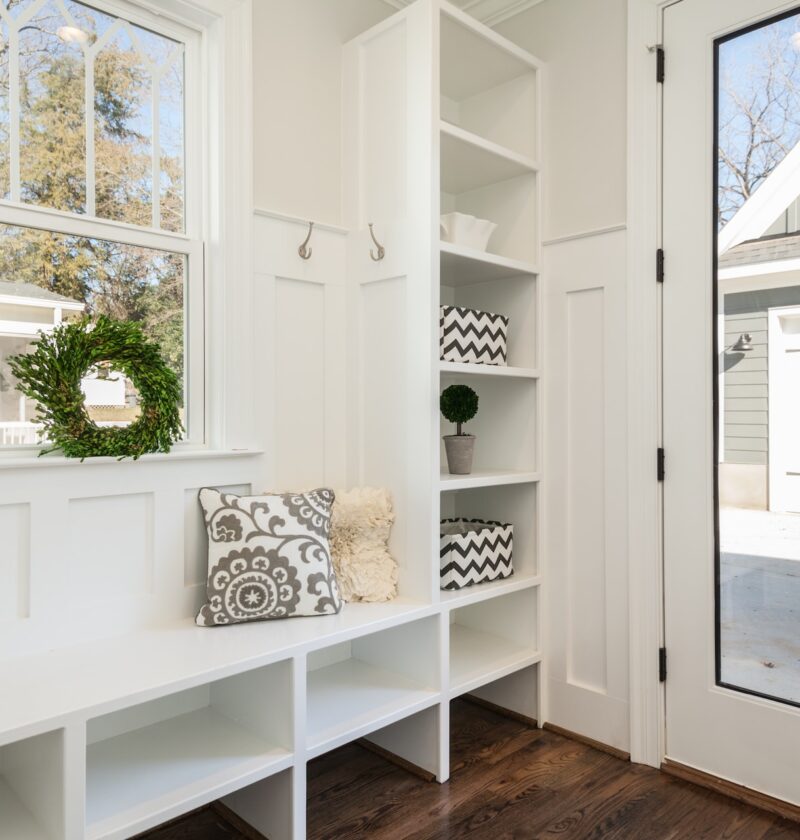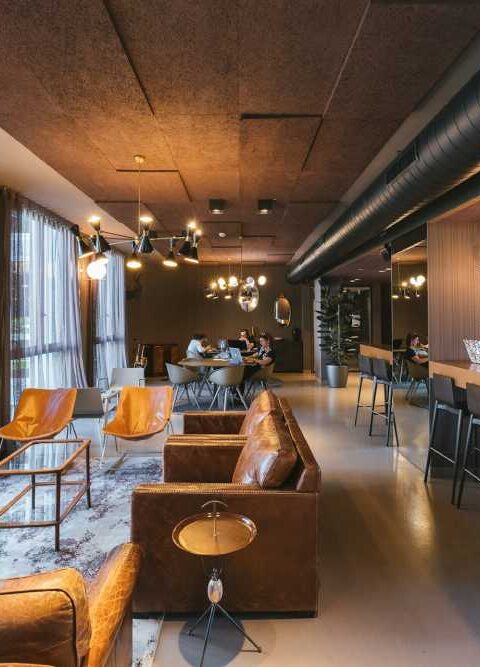Your home is your sanctuary, a place where you find comfort and relaxation. But it’s also a space that can get messy, especially during seasons when rain, snow, or mud are part of the daily routine. That’s where the humble mudroom comes into play. In this blog post, we’ll explore the purpose of a mudroom, how you should use a mudroom, and offer some practical tips on how to make the most of this often overlooked area in your home.
Understanding the Purpose of a Mudroom
1. A Barrier Between the Outdoors and Indoors
Imagine this: you’ve just returned from a long walk in the rain, and your shoes and coat are soaked. Without a mudroom, you’d be tracking dirt and water through your entire home. This is where the mudroom steps in as the first line of defense. It acts as a buffer zone, preventing outdoor messes from infiltrating your clean, indoor spaces.
2. Organized Storage Space
There are multiple ways of using your mudroom, and of them is using it as storage. It provides a designated area to store outerwear, footwear, and other outdoor essentials. This keeps your home clutter-free and ensures that you can easily find what you need when you’re heading out the door.
3. Seasonal Transitions
Mudrooms are especially valuable during seasonal transitions. In the winter, they can store heavy coats, snow boots, and mittens, while in the summer, they can house sunhats, flip-flops, and beach towels. This adaptability helps you keep your home tidy year-round.
4. A Laundry Hub
Some mudrooms double as laundry rooms, serving as a convenient space for washing, drying, and folding clothes. If your mudroom has these capabilities, it becomes a multitasking hero in your home.
Tips for Making the Most of Your Mudroom
1. Design for Functionality
When designing or organizing your mudroom, prioritize functionality. Ensure that everything has its place, from hooks for coats to cubbies for shoes. Here are some practical tips to consider:
- Install sturdy hooks at different heights for coats, backpacks, and bags.
- Use labeled bins or baskets to keep smaller items like gloves and scarves organized.
- Install a bench or seating area for easy shoe removal.
- Consider a shoe rack or cubbies to keep footwear neatly stored.
2. Optimize Storage
Mudrooms are all about storage, so make the most of the available space:
- Utilize wall space with shelves or cabinets for additional storage.
- Add hooks or pegs on the back of the door for extra hanging space.
- Install a floating shelf above the bench for decorative items or additional storage.
- Use clear bins or baskets to keep frequently used items visible and accessible.
3. Incorporate Durable Materials
Since mudrooms handle a lot of wear and tear, it’s essential to choose durable materials that can withstand the elements and frequent use. Consider materials like:
- Tile or vinyl flooring that’s easy to clean.
- Water-resistant paint or wainscoting to protect the walls.
- Sturdy, easy-to-clean countertops if your mudroom has a laundry area.
- Quality hardware and hooks that can support heavy coats and bags.
4. Personalize Your Space
Your mudroom doesn’t have to be purely functional. Add a touch of personality to make it a warm and welcoming part of your home:
- Paint the walls in a color that reflects your style and complements your home’s décor.
- Hang artwork or family photos to make the space feel more personal.
- Add a bulletin board or chalkboard for notes, reminders, and to-do lists.
- Incorporate plants or fresh flowers to bring a bit of nature indoors.
5. Keep It Clean and Tidy
The key to a successful mudroom is maintenance. Make it a habit to regularly declutter and clean the space:
- Empty bins and baskets periodically to discard items that are no longer needed.
- Sweep or vacuum the floor to remove dirt and debris.
- Wipe down surfaces to keep them clean and free of dust.
- Launder mats, rugs, and curtains as needed to maintain freshness.
6. Consider a Mudroom Makeover
If your current mudroom setup isn’t meeting your needs, it might be time for a makeover. Here are some ideas to consider:
- Convert a spare room or underutilized space into a mudroom.
- Install built-in storage solutions for a seamless look.
- Upgrade lighting to make the space feel brighter and more inviting.
- Explore new paint or wallpaper options to refresh the space.
7. Make It a Family Project
Get the whole family involved in organizing and maintaining the mudroom. Assign responsibilities for each family member, and establish routines for keeping the space tidy. This not only eases the workload but also fosters a sense of shared responsibility for the home.
8. Embrace Seasonal Changes
Remember that the needs of your mudroom can change with the seasons. Be flexible in how you use the space and adjust your storage solutions accordingly. For example:
- During the winter, focus on providing ample space for heavy coats and snow gear.
- In the spring and summer, make room for rain jackets, gardening tools, and sports equipment.
- Rotate out seasonal items to keep the mudroom organized and clutter-free.
9. Create a Drop Zone
Designate a specific area in your mudroom as a “drop zone” for items like keys, wallets, and mail. This helps prevent these items from being misplaced and makes it easy to grab them on your way out the door.
10. Maintain Your Mudroom Routine
Lastly, stick to your mudroom routine. Consistency is key to keeping this space functional and organized. Encourage everyone in your household to follow the established rules for using the mudroom, and make adjustments as needed to accommodate changing needs.
In Conclusion
A well-designed mudroom is a game-changer for any home. It serves as a functional buffer between the outdoors and indoors, keeps your belongings organized, and adapts to seasonal changes. By following these tips, you can transform your mudroom into a welcoming and efficient space that enhances the overall comfort and cleanliness of your home. So, embrace the potential of your mudroom and make the most of this valuable area in your living space.







